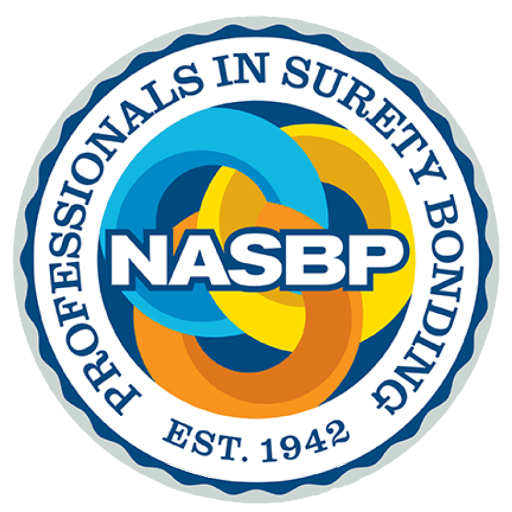NASBP Opposes OH and VA Proposals
Update on State Issues in Ohio and Virginia
- Alternative Delivery Method in Ohio
Earlier this year language was inserted in the Ohio state Governor’s budget bill stating “before construction begins pursuant to a contract for design-build services with a design-build firm, the design-build firm shall provide a surety bond to the public authority in accordance with the rules adopted by the Director of Administrative Services (DAS) under Chapter 119 of the Revised Code.” The DAS original draft required payment and performance bonds for 100% of the contract amount for projects less than $20 million, but required bonds for only 50% of the contract amount for projects greater than $20 million. NASBP submitted a comment letter addressing our concerns with the proposed surety bonding rule regarding the 50% bonding requirement.
NASBP was pleased to learn that after numerous meetings with lawmakers, agency officials and interested parties, DAS redrafted its proposed regulations. The revised draft now requires 100% bonding from the construction manager or design-builder for all projects. Also, the revised draft requires separate payment and performance bonds, each with a penal sum of 100% of the contract price. NASBP would like to thank all parties who participated during the deliberation including representatives of the surety industry and the following associations: the Ohio Associations of the American Subcontractors Association, Mechanical Contractors Association of America, and Associated Builders and Contractors and other groups involved with this effort. The DAS will conduct a Public Hearing on November 14, to consider the adoption of the revised draft. We will continue to keep the NASBP membership updated on this important issue.
- VDOT Considering Legislation that Raises the Bond Threshold for Transportation-related Projects
In early 2011, the Commonwealth of Virginia enacted legislation requiring a committee to review the performance and payment bond requirements for transportation-related construction projects and to report its findings to the Virginia Transportation Secretary with recommendations of suggested changes to bonding requirements for transportation-related construction projects by December 1, 2011. The committee includes producers, underwriters, and representatives from the construction and surety industries, as well as Virginia Department of Transportation (VDOT) staff. The committee met for the first time on September 29, and NASBP participated via conference call. At this meeting, VDOT staff asked the representatives of the surety and construction industries to assess the impact of increasing the bonding threshold for transportation-related projects from $250,000 to $500,000. NASBP submitted a comment letter offering its concerns regarding a threshold increase.
At the second meeting, NASBP was asked to offer recommendations for increasing small and minority contactor participation on VDOT construction projects. As described in NASBP’s second comment letter, NASBP voiced strong support for current education and bond assistance programs already in place that are proven to assist small and minority construction firms. However, based on the first two meetings, it appears that VDOT may be interested in seeking legislation that raises the bonding threshold from $250,000 to $500,000 for transportation-related contracts. This is similar to what occurred earlier this year in Virginia when legislation was enacted that increased the bonding threshold for non-transportation-related projects from $100,000 to $500,000. The Committee may meet up to four times; however, all meetings are to be completed by November 1, 2011. NASBP will keep the membership apprised of the committee’s recommendations and the final outcome of the process.
Congressional Analysis of U.S. SBA Surety Bond Guarantee Program (SBG)
On October 6, the Congressional Research Service (CRS), which works exclusively for the United States Congress, providing policy and legal analysis to committees and members of the House and Senate, regardless of party affiliation, released a report titled the “SBA Surety Bond Guarantee Program.” The report examines the program’s legislative intent, its current eligibility standards and requirements, and provides several performance statistics including the number and the amount of bond guarantees issued annually by SBA since the inception of the program. The report also examines the major issues that influenced the program’s development including the decision to supplement the Prior Approval Program with the Preferred Program and concludes with an examination of increasing the $2 million bond guarantee cap and combining the Prior Approval Program and the Preferred Program into one, unified Program of which NASBP and SFAA are cited as proponents of and continue to advocate for on Capitol Hill.
The report made additional points. During the 1980s and 1990s, the number of surety bonds issued by the SBA declined. The report indicates that one possible contributing factor “was the continuing reluctance of many surety companies to participate in the program.” (See page 9.) The report described various perspectives of increasing the program’s guarantee from $2 million to $5 million. It indicated that some proponents for raising the bond limit maintain that the increase would bring the SBG in line with contracting amounts for other small business programs, such as the 8a Minority Small Business and Capital Ownership Development Program and the Women-Owned Small Business Federal Contract Program — just to name a few. (See page 20.) The report also described how opponents of raising the guarantee might argue that raising the bond limit could lead to losses to the federal government and “given the current federal budgetary conditions, some might argue that they oppose any possibility of increasing the program’s risk of losses, no matter how small or how unlikely.” (See page 20.)
Finally, the report examines that the SBA is considering combining the Preferred and Prior Approval programs into a single program featuring the streamlined bond approval and monitoring process under the Preferred Program. (See page 21.) The report cites NASBP and SFAA as groups recommending this merger, while the reports speculates, because the proposal has not been formally introduced that, “opposition may come from those who are not convinced that the SBG is necessary to supplement the private market for surety bonds and would prefer that the program be eliminated rather than reformed.” (See page 21.) While SBA has made changes to the program such as streamlining the application process and reducing the paper work, it does recognize that further changes are needed and they are working with the surety industry to make those changes. We will keep you apprised of those changes once they are made public. To access the full report, please click here.
Get Important Surety Industry News & Info
Keep up with the latest industry news and NASBP programs, events, and activities by subscribing to NASBP SmartBrief.




